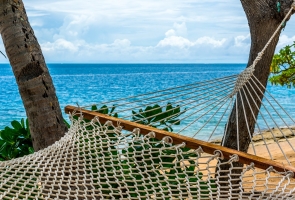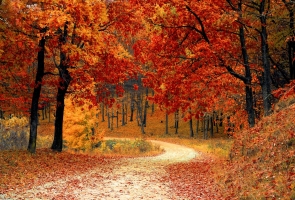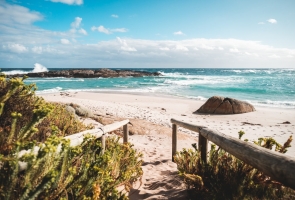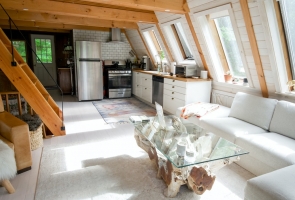Look, we know already that those majestic vistas create the perfect backdrop for romance. We get that it’s fun to swing in a hammock while the warm Caribbean breezes caress your face. I’m going on vacation. I’m reading your blog to get ideas and inspiration, not to read a romance novel.
As you can see, this is a real bone of contention for me. Overstating the obvious and exacerbating the benefits of choosing a specific destination won’t net you more bookings, get people to click on ads, or produce any type of conversion. Delivering good, descriptive copy that motivates readers to want to pay more attention to you will.
It’s your blog. Populate it with your own ideas and perspectives. The more realistic your descriptions are, the more people are going to trust your judgments about where to spend their vacation dollars or invest in whatever product or service you are attempting to market through your travel blog.
Now, with all of that being said, yes, it’s important to lean on colorful descriptors to paint an enticing picture. But how much is too much? I think I just gave you two good examples right out of the gate. If you’re sitting there thinking, “Wow, that’s what my content looks like,” keep reading. I’m about to show you how to do it right.
The Problem with Adjectives
Even though they’re necessary, adjectives can absolutely smother your messaging when overused. “Majestic,” “breathtaking,” “magnificent,” “perfect,” “ultimate” … these words are way overused, even by seasoned travel copywriters. The problem is, you need adjectives. You can’t get by without them even if you’re writing about toilet paper. However, you can control the volume on them. “Majestic” is kind of a loud word. There are better ones. Just ask any thesaurus.
So, let’s take a look at how to wrangle those adjectives and create readable content that your audience will want to read and not just stare at the pictures. Getting this right will go far in helping you gain people’s interest, loyalty, and trust.
Keep It Simple, Informative, and Real
Write the romance novel as a first draft if it makes it easier to get your main thoughts on paper. When you go back to proofread, ask yourself how you can trim or modify the descriptive words. Let’s use my opening examples as … um … examples!
“The majestic vistas create the perfect backdrop for romance.” There are two problems here: a horribly hackneyed descriptor and a lofty superlative. Imagine, for a moment, that you’re in the place you’re referencing. Better yet, think about a similar experience you’ve had. At any time did you ever look out at the landscape and think, “Wow, that’s majestic!” I, myself, have not. So, what’s the solution?
Personally, I know plenty of people who can gaze out at a majestic vista and say, “Whatever …” What makes it so majestic? Why would anyone really want to go there? What will they actually see and experience? That’s what your readers want to know.
Instead of just calling the entire scene majestic, how about focusing on the things that make it majestic and writing about that? Don’t leave the reader to define “majestic” in their own head.
Describe what people will see, not how they will perceive what they see when they get there. “Take in the surroundings, move in a little closer, and enjoy both the togetherness and surrounding beauty.” All of a sudden, you’ve placed readers in the scene and given them something they can more easily imagine.
I can’t believe I’m about to type this again …
‘Warm Caribbean breezes caress your face.” Really? Sounds like my vacation is getting fresh with me. Warm breezes in warm places with majestic vistas are quite nice. I’m just not sure if my vacation is trying to relax me or date me with that line. Let’s try something with a bit less of a Harlequin Romance kind of vibe …
“The sound of the surf coupled with warm Caribbean breezes make for a relaxing day out on one the region’s 300+ clear, sunny days per year.”
Again, you’re telling the reader more about the experience and bringing up a major selling point: a near guarantee of perfect weather. It’s a realistic description that leaves the fine details up to the reader regarding how the actual experience will feel. This is important for a successful travel blog. It demonstrates an ability to let readers gauge their own interest and place themselves in the scene.
About that Thesaurus …
If you’ve gotten too used to using those overused, overwrought adjectives and don’t know how to steer away from them, a thesaurus is your friend. Yes, even seasoned copywriters will appeal to a thesaurus for help giving their writing more structure and flow. Try to steer clear of unfamiliar or arcane words (thesauri don’t discriminate; they just list synonyms) and focus on simple but powerful descriptors. I gave you two good examples above of how to do it.
Need Help? We’ve Got You Covered!
BeezContent has a long history of developing great copy for successful travel content marketing professionals. Whether you run an agency or are simply running a monetized blog, strong content is a must. Need help keeping pace with audience demand? Not getting the results you want from your travel blog? Contact us. We’re here to help make your travel blog something that educates, entertains, engages, and converts.




